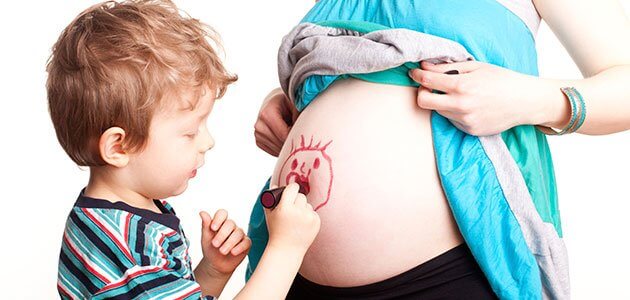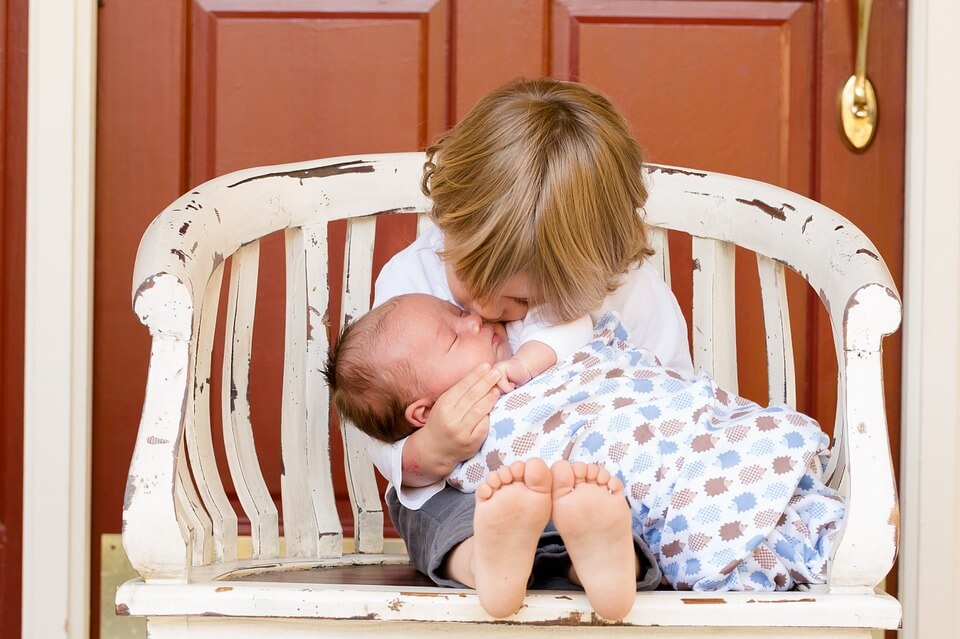How to Tell Your Child He's Going to Have a Sibling

When your child is going to have a sibling, parents not only face a new period of pregnancy and change, but also have to deal with possibly jealousy from the new big brother or sister.
That’s why, before the infamous jealousy appears, it’s good to know how to approach the situation from the very beginning. Here are some strategies to help you tell your child he will have a sibling.
If you have already made the decision to do so, keep in mind that young children lack perspective and don’t know how to correctly measure the passage of days, weeks or months, so a prolonged wait may cause them to lose interest or believe that the current situation will never change.
And while there is no right or wrong way to tell your child that he will have a sibling, the way you do it will depend on the child’s maturity as well as age. Telling a 2-year-old that a sibling is coming is not the same as telling an 8-year-old.
If your firstborn is at least 4 years old, announce the news after the first three months of pregnancy, when the greatest risk of miscarriage has passed.
But if your firstborn is less than 4 years old, it’s best to wait until the last trimester, or when the size of your belly becomes apparent.
From the age of eight onward, children are a little more mature and have a better understanding of things, so your speech can reflect a “more adult” way of breaking the news. Surely after being confided in, your child will feel like getting involved with the arrival of the baby and should not be held back.

A new sibling and a new world
Once your child already knows he’s getting a sibling, help him participate in the event by showing him the ultrasounds and telling him stories about what is happening inside you.
You can also allow yourselves to dream together about what the baby is doing, and let him gently pat your belly so that he connects early on with his sibling. Take advantage of these moments of union to remind him how much you love him, how happy you are and how lucky the baby will be to have such a wonderful older sibling.
How you give the news is key and can define everything that happens next, so the key is to communicate it naturally. If your child is over 4 years old, he may actually want to have a sibling already.
Ideally, both parents give the news together, because having a child is a family affair. A good method is to do it at a time when everyone is happy in order to associate the baby’s arrival with something positive. Therefore, the first thing we must do is have the conversation naturally so that the child doesn’t feel restless.
Apart from a natural conversation, one of the most useful tips is to share the news with great joy. Remember that to have a sibling is a miracle and something wonderful and positive, since in the future both children will be able to play together and give each other lifelong support.
Convey this idea to your oldest child so that he sees the arrival of a new baby in the family as nothing more than the beginning of something precious. There will be an endless number of fun adventures for both of them.

A happy and realistic announcement
Strategies include reading stories of children waiting for a baby sibling, which can help your oldest child better understand his own feelings.
Explain the changes that will occur in your family’s life from a perpetually optimistic yet realistic perspective. For example, your oldest child should know that, just like when he was born, his younger sibling will need a lot of care and attention, as babies cannot do anything on their own. If you leave out any details that might displease him, he’ll be in for an unpleasant surprise and will not know how to handle it.
Many parents are worried their children will start asking awkward questions. Don’t be afraid if your child asks where babies come from. On the contrary, don’t miss this opportunity to clarify any doubts.
As a general rule, children will be more interested in knowing exactly where they come from, so don’t craft stories about storks, etc. Instead, talk to your child clearly and realistically, as the truth is always the best tool.
All cited sources were thoroughly reviewed by our team to ensure their quality, reliability, currency, and validity. The bibliography of this article was considered reliable and of academic or scientific accuracy.
- SHUGULI MANGUIA, C. Y. (2013). ESTABILIDAD EMOCIONAL. GUÍA DE ORIENTACIÓN SOBRE LA PREPARACIÓN DEL NIÑO/A PARA LA LLEGADA DE UN NUEVO HERMANO DIRIGIDA A PADRES DE FAMILIA (Bachelor’s thesis). http://www.dspace.cordillera.edu.ec:8080/xmlui/handle/123456789/1304
- BAÑOS CHORLANGO, J. L. (2014). ¿ COMO APRENDER A SOBRELLEVAR LOS CAMBIOS CONDUCTUALES DE NIÑOS Y NIÑAS DE 3 AÑOS DE EDAD POR LA LLEGADA DE UN NUEVO HERMANO O HERMANA AL HOGAR? ESCUELA PARA PADRES DIRIGIDA A CREAR UN AMBIENTE ESTABLE ENTRE LOS MIEMBROS DE LA FAMILIA Y EL NUEVO BEBE DIRIGIDA A PADRES DE FAMILIA DEL CENTRO DE DESARROLLO INFANTIL” RINCÓN DE LUZ” DEL DMQ DURANTE EL AÑO LECTIVO 2014-2015 (Bachelor’s thesis). https://dspace.cordillera.edu.ec/handle/123456789/1748
- Paredes Rojas, N. A. (2017). Nano-llega un nuevo hermano(Bachelor’s thesis, Uniandes). https://repositorio.uniandes.edu.co/bitstream/handle/1992/18902/u729228.pdf?sequence=1
This text is provided for informational purposes only and does not replace consultation with a professional. If in doubt, consult your specialist.








